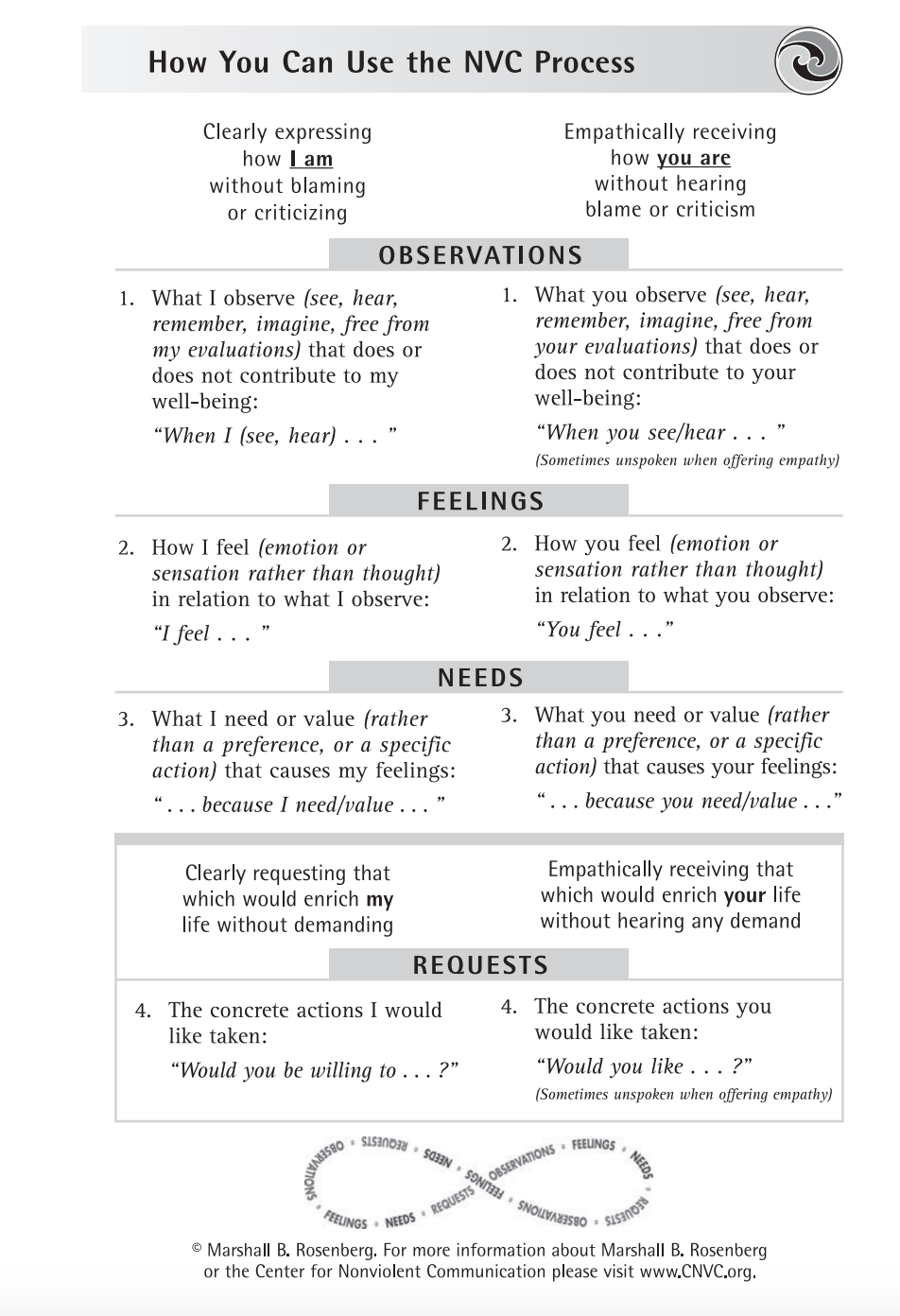Non-Violent Communication; A “How To”
- Selina Delgado Schultz

- Mar 18, 2022
- 3 min read

Have you ever had a conversation that felt like it was going in circles? Maybe you didn’t feel heard, maybe you felt the urge to defend yourself, maybe you were too angry to properly communicate your emotions, or maybe you had trouble listening to the other person because what they said upset you. Communicating with others is a skill that we often take for granted.
However, most of us do it everyday, whether we realize it or not. We do it at work, at home, or even in public settings. But how to communicate effectively is an art form that, with practice (and patience), can become second nature. Non-violent communication (NVC) is an approach to compassionate communication developed by Dr. Marshall B. Rosenberg. The emphasis being on seeking the meaning within every statement an individual shares with you, and in this way finding the path towards deep listening, respect, and compassion. The beauty of this approach is that, despite the way the speaker conveys a message to you (whether it be offensive, accusatory, aggressive) we can help them feel their needs are understood. Once that happens, it creates a space for us to feel understood as well using a seemly simple formula of four crucial steps:
1. Observations: The most important aspect of this step is distinguishing an observation from an evaluation. According to Dr. Rosenberg, the important distinction between evaluations and observations are, evaluations rely on specific times and contexts while observations are what we are seeing, feeling, or touching that are affecting our well-being.
a. Evaluation: You never want to help me. b. Observation: The last three times I’ve asked you for help, you said you were busy.
2. Feelings: Communicating feelings can be very delicate, incredibly vulnerable, and thus a crucial aspect of NVC. However, Dr. Rosenberg advises to rely on language that specifically conveys a feeling (specific emotions) , and to distinguish feelings from thoughts (what we think we are, how we think others are behaving/thinking towards/about us).
a. Thoughts: “I feel worthless” (“worthless” being a thought you might have about yourself) b. Other’s Behavior: “I feel misunderstood” (“misunderstood” implies other’s views of you”) c. Feelings: “I feel angry” (“angry” being a direct emotion)
3. Needs: The most important part of this step is connecting your feelings from step three to your needs (i.e the needs behind the feelings). Dr. Rosenberg encourages us to use the phrase “I feel... because I need...” as a template. Through this process we are developing what he coins, emotional responsibility which happens in three stages:
1) Emotional Slavery: believing we are responsible for the feelings of others 2) The Obnoxious Stage: refusing to admit we care what anyone thinks or needs
3) Emotional Liberation: we can accept full responsibility for our own feelings while also accepting we are not responsible for the feelings of others, or meet our own needs at the expense of others.
4. Requests: This is the final step in NVC and requires asking for what you are requesting versus what you are not requesting, Dr. Rosenberg calls this, using positive language. He also emphasizes that our requests utilize concrete action language rather than vague language that can lead to confusion or miscommunication. To avoid miscommunication, Dr. Rosenberg suggests the extra step of asking for a reflection from the listener to assure the request was properly conveyed and received.
Sources: Rosenberg, M. B. (2002). Nonviolent communication: A language of compassion. PuddleDancer Press.
Wrote by: Selina Delgado
Mental Health Counselor Intern




Comments